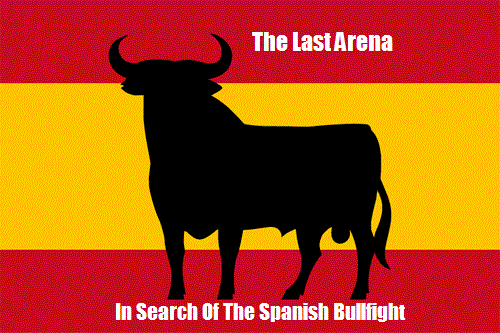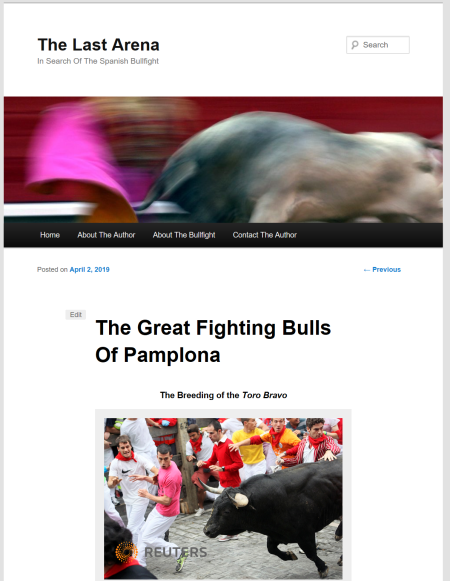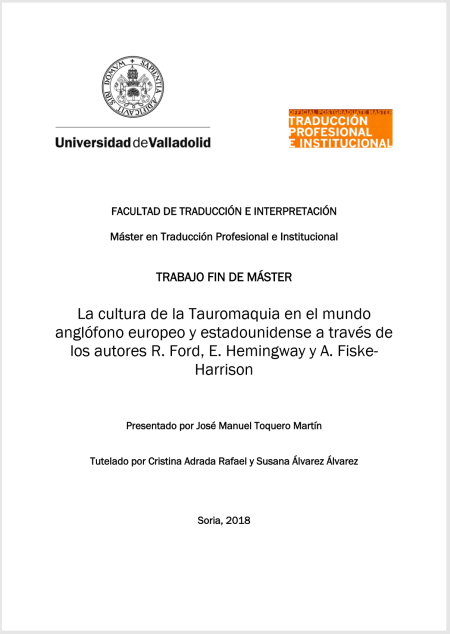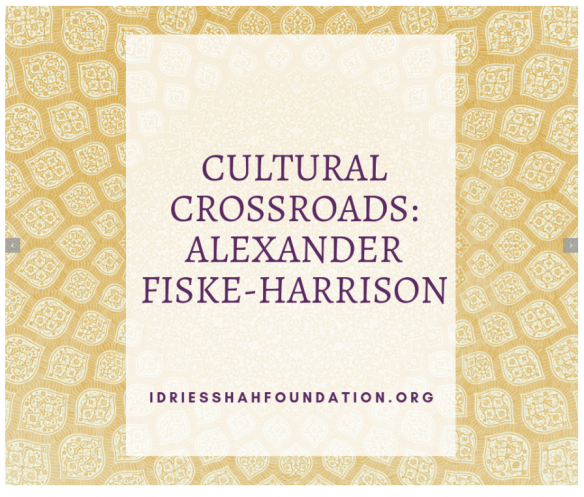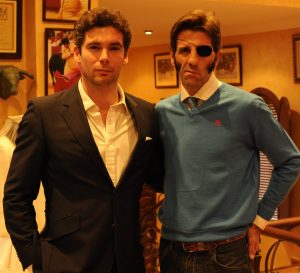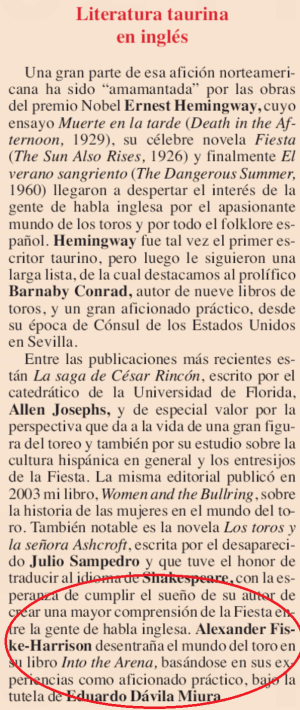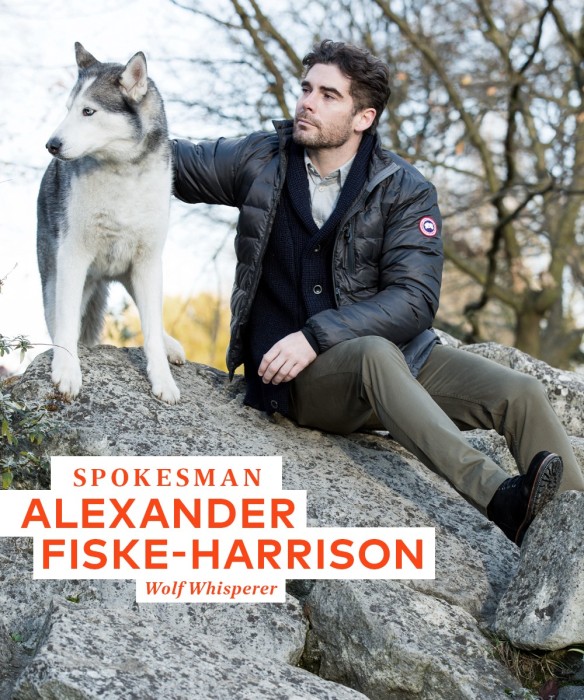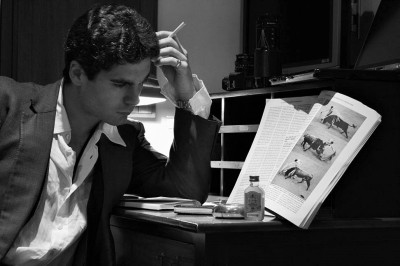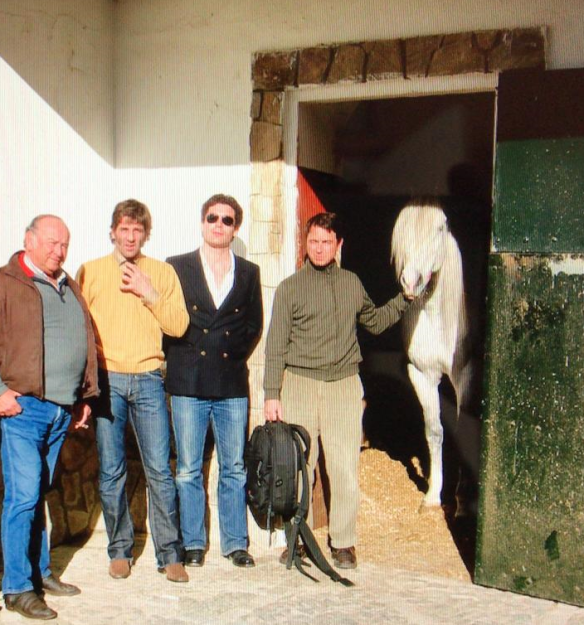
Famed ‘Torrestrella’ bull-breeder – and founder of the Royal Andalusian School of Equestrian Art – Álvaro Domecq Romero, Spain’s number one matador Juan José Padilla, author Alexander Fiske-Harrison, photographer Nicolás Haro, and Don Álvaro’s favourite pura raza, ‘Pure Spanish’, stallion at Los Alburejos in 2009 (Photo: AFH personal collection)
It was sad to see confirmed in the press the rumour I heard from the Núñez del Cuvillo family that Álvarito Domecq has sold his legendary ranch, where he not only bred the famed Torrestrella – ‘Star Tower ‘ – bulls, so named for the ruined castle overlooking his estate, but also bred his pura raza Española horses – what we call ‘Andalusians’ in English – and founded one of the most important Schools of Riding in the World. Mind you, €20 million is not a bad price for a house in rural Spain.
Meanwhile, I have been working on some other bull and horse projects, which will come out through Polo Andalusia and Bullfighting Andalusia in the next few weeks. Along with a book and documentary film project on which more at The Last Arena blog in the same time frame.
Oh, and a visit to the House of Deputies – the House of Commons or Congress of Spain – although not as the Spanish newspaper ABC is suggest to promulgate a “Law Fiske-Harrison”!
¿Se imaginan una Ley Fiske-Harrison de Teo García Egea para derogar la Ley Rhodes de Pablemos?
The full article is, in Spanish, available here:
https://www.abc.es/opinion/abci-ignacio-ruiz-quintano-ley-rhodes-202002120018_noticia.html#
Alexander Fiske-Harrison

